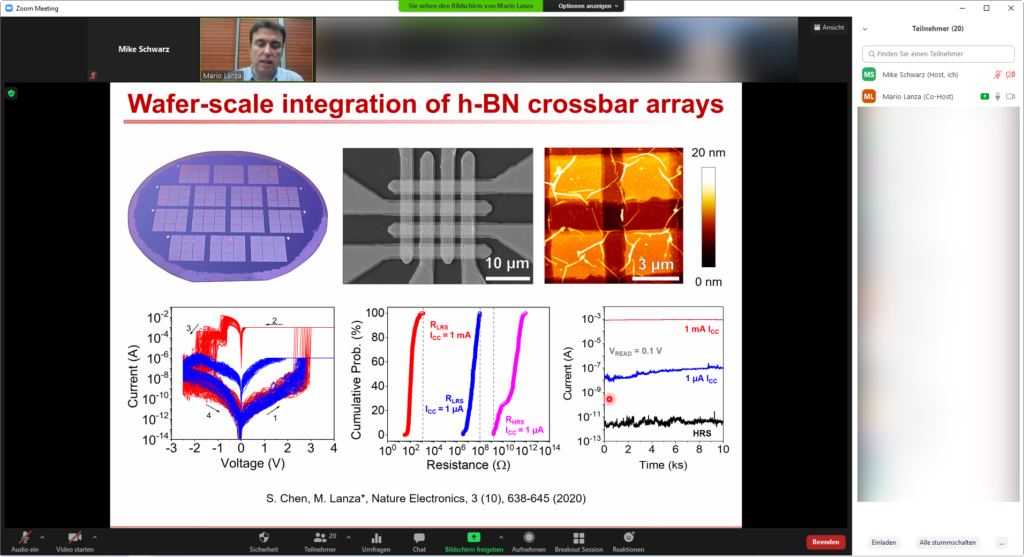Successful Mario Lanza DL on Hexagonal boron nitride based electronic devices and circuits: status and prospects
The distinguished lecture on “Hexagonal boron nitride based electronic devices and circuits: status and prospects” was held on May20, 2021. It was organized by the EDS Germany Chapter and co-sponsored by the NanoP from THM – University of Applied Sciences. The DL was attended by 14 IEEE participants, as well as other non IEEE members.
The distinguished lecture of Prof. Lanza from KAUST, Saudi Arabia gave an outstanding overview of the status and prospects of hexagonal boron nitride based electronics devices and circuits. The main conclusion of Prof. Lanza’s talk is that, while hexagonal boron nitride grown by scalable methods still contains too many defects that hinder its application as reliable gate dielectric in transistors, it exhibits superior resistive switching properties that allows employing it to fabricate reliable memristors for multiple applications, including electronic synapses and neurons for neural networks and/or artificial intelligence.

The DL started discussing the fabrication of 2D materials based circuits, where the challenges are and that often circuits and devices suffer depending on the process steps on huge variability. He went through materials and methods, e.g. synthesis methods, and methods for transferring 2D material. Here, exfoliation vs. CVD growth was discussed with advantages and challenges. Key points as degradation and breakdown of thin dielectrics in context to memristors were highlighted and Prof. Lanza proposed their solution of 2D materials based memristors. Morphology and local electrical properties influence essentially the behavior, where 2D materials offer better control, because fewer atoms involved in the “filament” generation. Further properties as high thermal conductivity, higher chemical stability and simple fabrication and high integration were highlighted.
The DL went through further electrical properties as bipolar and threshold resistive switching, which allows for synapse and neuron emulation by one device in a electronic circuit. It is obvious that this allows for a high integration with less effort compared to other solutions.
Prof. Lanza showed initial solution of memristive synapses and neurons, showed wafer-scale integration of h-BN crossbar arrays, yield of Au/h-BN/Au synapses and their variability. Furthermore results for artificial neuronal networks with h-BN memristors in terms of emulated/simulated multilayer perceptron networks with expectations of 98% correct classification realized in hardware.
